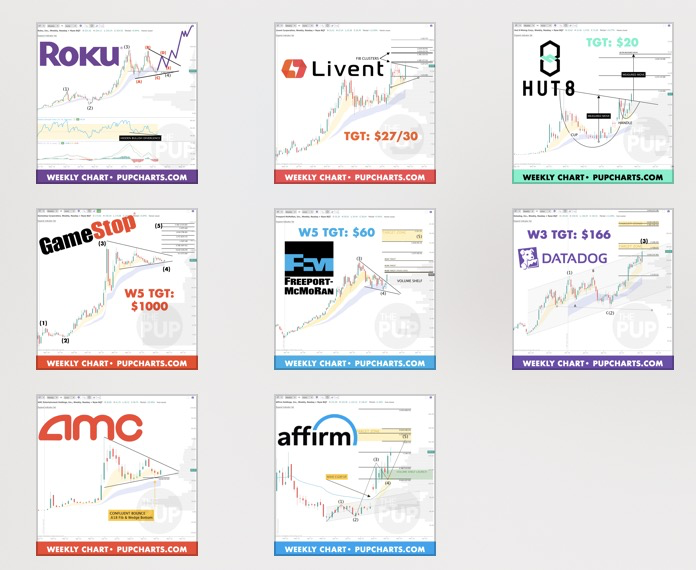
Atomic Habits - 10 Ways To Hack A Better Life
@JamesClear spent 6 years researching, writing, and thinking about habits.
Habits are the compound interest of self-improvement.
#AtomicHabits
@JamesClear spent 6 years researching, writing, and thinking about habits.
Habits are the compound interest of self-improvement.
#AtomicHabits

1. Systems > Goals
Goals are what you want to achieve. Systems help you get there.
You don't rise to the level of your goals, you fall to the level of your systems.
Winners and losers have the same goals, it's the process that separates one from the other.
Goals are what you want to achieve. Systems help you get there.
You don't rise to the level of your goals, you fall to the level of your systems.
Winners and losers have the same goals, it's the process that separates one from the other.
2. Osmosis
The quality of our life depends on the quality of our habits. Surround yourself with people who have good habits that you want to incorporate into your life.
The quality of our life depends on the quality of our habits. Surround yourself with people who have good habits that you want to incorporate into your life.

3. 1% Better - Tiny Changes
Small changes may seem unimportant at first. If you can stick with it for a long period of time, the power of compounding will surprise you. If you can get 1% better a day, you'll end up 37 times better at the end of the year.
Small changes may seem unimportant at first. If you can stick with it for a long period of time, the power of compounding will surprise you. If you can get 1% better a day, you'll end up 37 times better at the end of the year.
4. Visual Cues
Make habits easy. Place visual cues around your home. Post-it notes can help reinforce good habits. If you make your habits more accessible, you're more likely to follow through on them.
Make habits easy. Place visual cues around your home. Post-it notes can help reinforce good habits. If you make your habits more accessible, you're more likely to follow through on them.
5. Habit Stacking
When it comes to building new habits, use the connectedness of behavior to your advantage. Identify a current habit you already do each day and then piggyback it to your new behavior on top. This is called habit stacking.
When it comes to building new habits, use the connectedness of behavior to your advantage. Identify a current habit you already do each day and then piggyback it to your new behavior on top. This is called habit stacking.

6. Mindset
You believe what you tell yourself. When you change your mindset, you change your life.
Think good thoughts and surround yourself with positive affirmations.
You believe what you tell yourself. When you change your mindset, you change your life.
Think good thoughts and surround yourself with positive affirmations.
7. Law of Attraction
For new habits to stick, make them attractive. We take action when we expect a reward at the end. If we can associate a good habit w/ pleasure, we'll get the dopamine hit our brain needs.
Allow yourself to watch reality TV only after your workout.
For new habits to stick, make them attractive. We take action when we expect a reward at the end. If we can associate a good habit w/ pleasure, we'll get the dopamine hit our brain needs.
Allow yourself to watch reality TV only after your workout.
8. Micro Habits
We spend too much time & energy trying to figure out the best way to do something. Instead, use the 2-minute rule. Identify a simple 2-minute version of your habit as a first step towards your goal.
Put on work out clothes -> 10 minute walk -> 10K steps -> 5K
We spend too much time & energy trying to figure out the best way to do something. Instead, use the 2-minute rule. Identify a simple 2-minute version of your habit as a first step towards your goal.
Put on work out clothes -> 10 minute walk -> 10K steps -> 5K
9. Breaking Bad
Think of bad habits as an inversion of good habits. Make them invisible, unattractive, difficult, and unsatisfying. An example would be unplugging your TV or taking the batteries out of the remote.
Think of bad habits as an inversion of good habits. Make them invisible, unattractive, difficult, and unsatisfying. An example would be unplugging your TV or taking the batteries out of the remote.

10. The Holy Grail
The holy grail is not a single improvement, but thousands of them. If you keep layering small changes on top of one another, the results will add up & you'll reach a tipping point.
The holy grail is not a single improvement, but thousands of them. If you keep layering small changes on top of one another, the results will add up & you'll reach a tipping point.
Commit to building 1 Atomic Habit at a time and you will achieve extraordinary results.
If you found this thread helpful, I would highly encourage you to buy the book. It goes into much more detail on the frameworks I discussed above.
If you found this thread helpful, I would highly encourage you to buy the book. It goes into much more detail on the frameworks I discussed above.
You've made it to the end. 👏
Enjoyed this thread?
• Please like each post ❤️
• ReTweet the first post so more people can read the entire thread 🐦
• Sign up for my newsletters ✍🏼
Enjoyed this thread?
• Please like each post ❤️
• ReTweet the first post so more people can read the entire thread 🐦
• Sign up for my newsletters ✍🏼
📈 Stock Market Update: bit.ly/3DlZOCc
✍🏼 Personal Writing: bit.ly/3FEqVKW
💣 Atomic Essays: bit.ly/3DjCEfN
I'm Danny Naz. I write, I travel, I tweet and I eat. And I'm hungry for more.
🚢 #Ship30for30 🚢
✍🏼 Personal Writing: bit.ly/3FEqVKW
💣 Atomic Essays: bit.ly/3DjCEfN
I'm Danny Naz. I write, I travel, I tweet and I eat. And I'm hungry for more.
🚢 #Ship30for30 🚢
• • •
Missing some Tweet in this thread? You can try to
force a refresh












